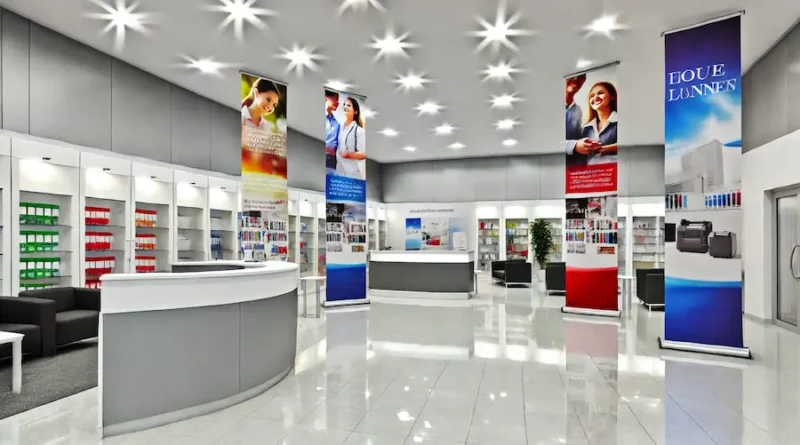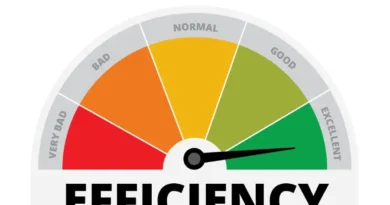What You Need to Know about Inside Banners for Businesses
In the world of marketing, inside banners (also known as in-store or indoor banners) are a powerful tool for businesses to communicate with their customers. Unlike digital ads, these physical banners have a tactile presence that can influence purchasing decisions, enhance brand visibility, and create memorable customer experiences. However, the effectiveness of inside banners hinges on more than just attractive design; it requires strategic placement, compelling messaging, and alignment with the overall brand identity. This article reveals the secrets of using inside banners effectively for business success.
1. Understanding the Purpose of Inside Banners
Before designing banners for indoor use, it’s crucial to understand their purpose. Inside banners serve various functions depending on the business goals and customer journey. Common purposes include:
- Promotional Messaging: Highlighting ongoing sales, special offers, or new product launches to drive immediate sales.
- Brand Awareness: Reinforcing brand identity and values to build recognition and loyalty.
- Directional Signage: Guiding customers to specific areas, services, or products within the store.
- Informational Content: Providing information about product benefits, features, or usage tips to educate customers.
Understanding the purpose of the banner will influence its design, placement, and messaging. Aligning the banner’s objective with the broader marketing strategy ensures consistency and maximizes impact.
2. Design: Creating Eye-Catching Visuals
Design is a critical element in the success of inside banners. To capture attention and communicate effectively, banners must be visually appealing and easy to read. Here are some design secrets to consider:
- Bold Colors and Contrast: Use bold, high-contrast colors that stand out against the store’s interior. The right color combinations can grab attention from a distance and guide the eye to the message.
- Readable Fonts: Choose clear, legible fonts that can be easily read from a distance. Avoid overly decorative fonts that may look appealing up close but are hard to read at a glance.
- Simple Messaging: Keep the message concise and to the point. Use short phrases or bullet points to convey the key message quickly. Overloading the banner with text can overwhelm customers and reduce readability.
- Visual Hierarchy: Organize the content to guide the viewer’s eye from the most important elements to secondary information. Typically, this involves placing the headline at the top, followed by the main message and a call-to-action.
- High-Quality Images: If using images, make sure they’re high-resolution and relevant to the message. Images should support the text and create an emotional connection with the viewer.
3. Strategic Placement: Location Matters
The placement of inside banners significantly affects their visibility and impact. Strategic placement ensures that the right message reaches the right audience at the right time. Consider these tips for optimal banner placement:
- High-Traffic Areas: Place banners in areas with high foot traffic, such as store entrances, checkout lines, or near popular product displays. These spots maximize visibility and engagement.
- Eye-Level Positioning: Position banners at eye level to ensure they’re easily noticed. This positioning is more likely to catch customers’ attention and encourage them to read the message.
- Point of Sale (POS) Areas: Banners near POS areas can influence last-minute purchasing decisions. Use these banners to promote impulse buys, special discounts, or loyalty programs.
- Directional Signage: Use banners to direct customers to specific areas, such as new collections, sales sections, or service counters. Clear directional signage improves the shopping experience and helps customers to find what they need.
- Event-Specific Placement: For events or promotions, place banners strategically around the relevant area. For example, if hosting a product demonstration, place banners near the demo station to attract interest.
4. Messaging: Crafting Compelling Copy
The copy on inside banners must be clear, compelling, and aligned with the brand voice. The right message can motivate customers to take action, whether it’s making a purchase, signing up for a service, or exploring a new product. Here are some messaging secrets:
- Call to Action (CTA): Always include a strong, clear CTA that tells customers what to do next. Whether it’s “Buy Now,” “Learn More,” or “Visit Us Today,” a CTA drives action and creates urgency.
- Emphasize Benefits: Focus on the benefits customers will receive rather than just the features of a product. For example, instead of saying “50% off select items,” say “Save 50% on your favorite brands today!”
- Create Urgency: Use time-sensitive language to encourage immediate action. Phrases like “Limited Time Offer,” “Ends Soon,” or “While Supplies Last” create a sense of urgency that can drive quick decisions.
- Consistency with Brand Voice: Ensure the messaging aligns with the overall brand voice and tone. Consistency helps to reinforce brand identity and builds trust with customers.
- Personalization: If possible, personalize the message to the audience. For example, “Welcome, First-Time Shoppers! Get 10% Off Your First Purchase” can make new customers feel valued.
Conclusion
Inside banners are a versatile and effective tool for businesses to communicate with customers, promote products, and enhance the shopping experience. By understanding the purpose of each banner, focusing on eye-catching design, strategic placement, compelling messaging, and integrating with the overall marketing strategy, businesses can maximize the impact of their inside banners. Embracing technology and continuously measuring success ensures that inside banners remain a powerful component of the marketing mix, driving engagement, and boosting sales in today’s competitive retail environment.


